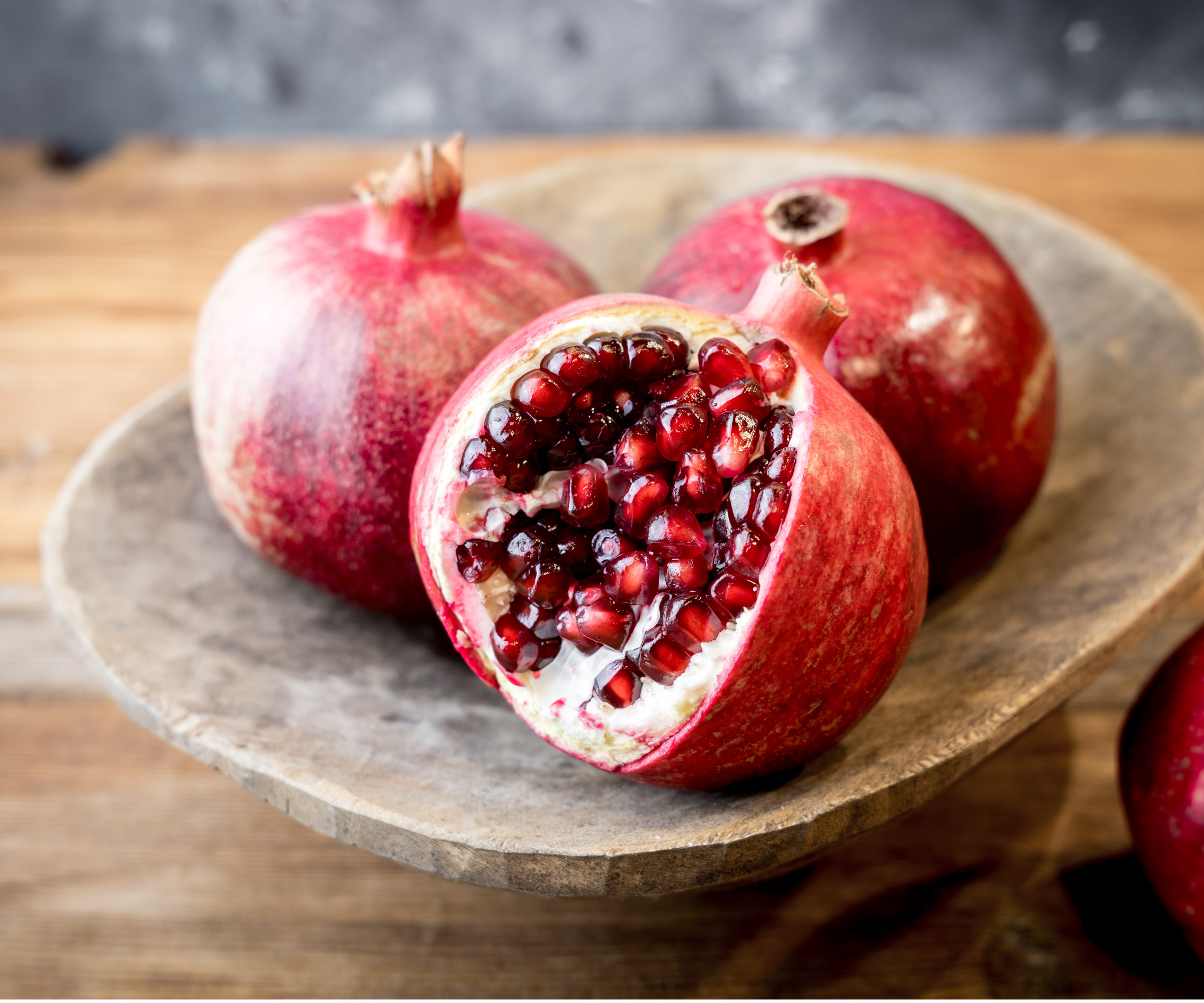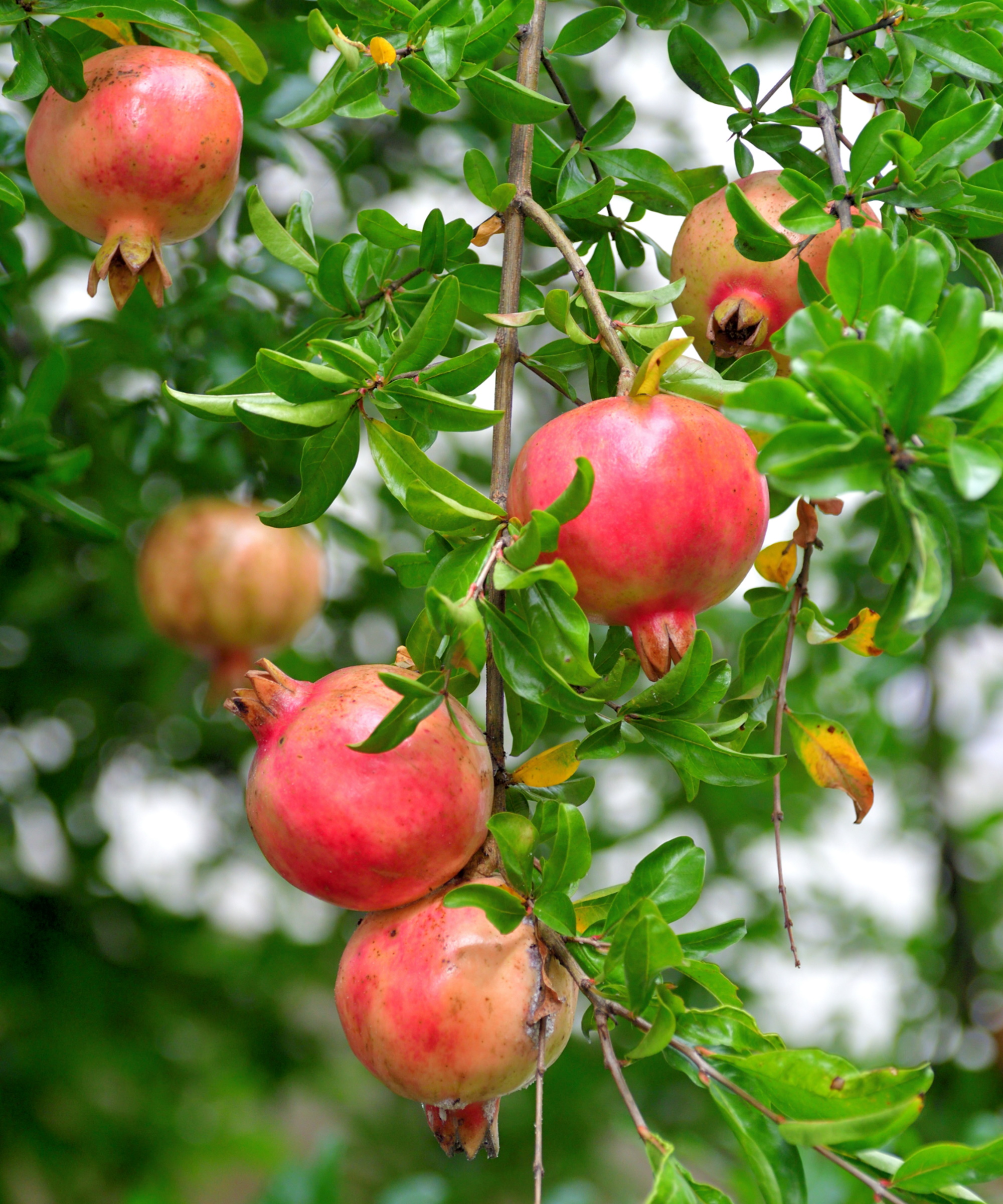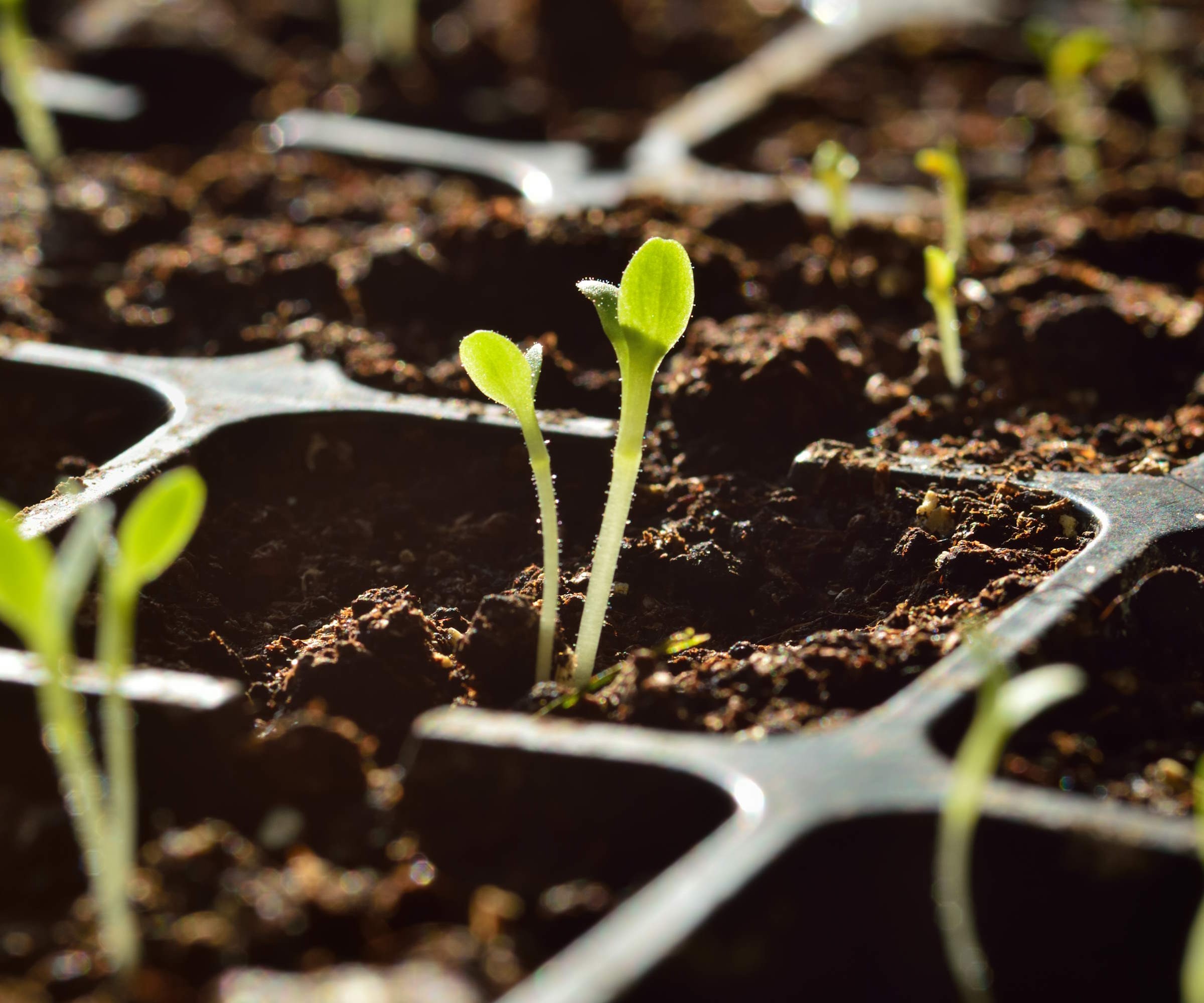How to plant pomegranate seeds – for sweet fruit to harvest in fall
You can even use pomegranate seeds from the grocery store


Enjoying pomegranates from your own backyard is a privilege many fruit-growing gardeners have. While it's possible to purchase an established pomegranate tree from a nursery, ready for planting, with a little bit of patience it can be much more rewarding to grow your own tree from scratch.
Pomegranates trees and bushes have glossy leaves and are native to the Middle East. They're hardy across US hardiness zone seven to zone 11, and come in a wide range of varieties, including smaller sizes that make the list of the best fruit trees to grow in pots. You can grow them from their edible seeds and typically harvest them from mature trees in fall, when the fruit turns a deep red-purple color.
If you want to take on the challenge of growing your own pomegranate tree, look no further. We've compiled the ultimate guide to planting pomegranate seeds so you can get started with homegrown fruits in your yard.

How to grow pomegranate from seed
'Seedlings will typically sprout within 30-40 days,' says Valeria Nyman, gardening expert from gardening app Taim.io. 'However, be prepared to embrace the long game here - fruit-bearing can take between three to five years,' she adds.
Hardier pomegranate varieties can tolerate temperatures as low as 14°F, but if you live in a colder climate it might be best to consider growing a dwarf variety in a pot that can be moved into a greenhouse during colder seasons - like this red pomegranate bush from Fast Growing Trees.
Nevertheless, it's best to sow your seeds indoors to get your pomegranate tree going. Here's everything you need to know:
How to plant pomegranate seeds

- Seeds: There are a couple of ways you can source pomegranate seeds to plant. You can use store-bought pomegranate seeds, like these pomegranate seeds from Walmart, but it might not be the most reliable. 'Not all grocery-store pomegranates will sprout true to the parent plant since many are hybrids,' Valeria explains. 'For better results, you'll want to try collecting seeds from an organic fruit, as they are more likely to be viable,' she adds. Alternatively, plant these pomegranate tree seeds from Amazon. The important thing to know is you need to clean your seeds of the aril before planting - that is, the red fleshy coating. 'Allow cleaned seeds to dry for a couple of days before planting,' advises Valeria. No matter which seeds you choose to plant, you'll also need to make sure you have an appropriate vessel to sow them in, like a DIY seed tray.
- Soil: When planting a tree, it's important to know the best soil type to use. Pomegranates do best in a well-draining soil that has a slightly acidic pH. This pomegranate potting soil mix from Amazon is ideal for planting out your pomegranate tree. In the meantime, use this seed starter soil from Amazon for sowing your seeds. 'Plant the seeds about half an inch to one inch-deep in a moist planting medium,' says Tammy Sons, horticulturist and CEO of TN Nurseries. One of the most common seed sowing mistakes is not sowing seeds far enough apart. For pomegranate seeds, aim for two or three in one segment of your seed tray.
- Light and temperature: 'Pomegranate seeds germinate best in warm temperatures of 75-85°F,' Tammy notes. Likewise, to help your seeds germinate, keep your seed tray somewhere with plenty of bright light. You might find that indoor growing systems aid germination. Try using this seedling heat mat from Amazon to keep your seeds warm and this grow light from Amazon to provide sufficient light.
- Water: Once planted, you should water your sown pomegranate seeds well. This is an essential requirement for seed germination. 'Ensure the soil remains moist but not waterlogged,' Valeria advises. This moisture meter from Amazon is useful in identifying when your seed soil is ready for a top up - make sure to not let it dry out entirely.

Valeria is the Chief Product Officer at Taim.io, an innovative platform that serves as a personal, adaptive gardening coach, offering tailored weekly advice to users. Valeria is a lifelong gardener and offers advice on a range of gardening matters.
When to transplant pomegranate seedlings

After around five weeks, you will notice your pomegranate seeds sprout. Continue providing optimal light, temperature and moisture conditions to encourage the seedling to grow.
'Once the seedlings reach about four to six inches high, you can transplant them,' Tammy says.
As mentioned, you can either plant pomegranate seedlings directly in the ground or in pots, depending on the variety you're growing and how large it gets.
When planting in the ground, make sure to choose a spot that gets plenty of sun but is protected from strong winds: 'Ensure adequate sunlight and aeration as they grow,' Valeria says. 'They are indeed drought-tolerant trees, but appreciate a good thorough soaking every so often,' she adds.
'Water the pomegranate well for the first year to encourage root growth. After that you can switch to watering about every 10-14 days,' Tammy recommends.

Tammy Sons is a horticulture plant expert, garden writer, and educator. Tammy is the CEO and founder of TN Nursery, a thriving online plant nursery based in Altamont, Tennessee. She is also a prolific writer, sharing her knowledge through articles on various gardening topics, including plant care, sustainable landscaping, and the latest trends in horticulture.
FAQs
How do you harvest pomegranate seeds?
You can harvest pomegranate seeds from a pomegranate by cutting open the fruit and scooping out the arils - the red fleshy coating of the seeds: 'Peel the outer layer of the pomegranate to expose the arils, then gently rinse them to remove the pulp,' says Valeria Nyman, gardening expert from gardening app Taim.io. As pomegranate is a tough fruit, it's best to carefully use a sharp kitchen knife (available at Walmart) to cut it open.
Growing a pomegranate from seed certainly requires some patience, as these trees need to establish for a few years before bearing fruit. To keep your new pomegranate tree in a healthy condition and to keep it productive, find out how to prune a pomegranate tree or bush. And if you're looking for an easier fruit tree to grow inside your home, browse our picks of the best indoor fruit trees.
Sign up to the Homes & Gardens newsletter
Design expertise in your inbox – from inspiring decorating ideas and beautiful celebrity homes to practical gardening advice and shopping round-ups.

Tenielle is a Gardens News Writer at Homes & Gardens. She holds a qualification in MA Magazine Journalism and has over six years of journalistic experience. Before coming to Homes & Gardens, Tenielle was in the editorial department at the Royal Horticultural Society and worked on The Garden magazine. As our in-house houseplant expert, Tenielle writes on a range of solutions to houseplant problems, as well as other 'how to' guides, inspiring garden projects, and the latest gardening news. When she isn't writing, Tenielle can be found propagating her ever-growing collection of indoor plants, helping others overcome common houseplant pests and diseases, volunteering at a local gardening club, and attending gardening workshops, like a composting masterclass.
-
 I’m an HVAC technician, and this is when I turn my AC on each year – plus 5 checks I always do beforehand
I’m an HVAC technician, and this is when I turn my AC on each year – plus 5 checks I always do beforehandSave yourself an AC hassle by running my checks and turning it on before big heat hits
By Josh Mitchell Published
-
 This simple marble hack elevates my budget-friendly wooden kitchen countertops and prevents the dreaded water damage for way less than you’d think
This simple marble hack elevates my budget-friendly wooden kitchen countertops and prevents the dreaded water damage for way less than you’d thinkThis design trick looks expensive, solves a problem, and was the easiest decision I made during my kitchen reno
By Charlotte Olby Published